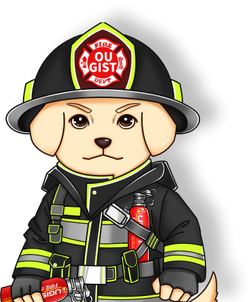Understanding the Shelf Life of Various Types

Introduction: Fire extinguishers are essential safety devices that can save lives and protect property during fire emergencies. However, like many products, fire extinguishers also have a limited shelf life. In this blog, we will delve into the concept of fire extinguisher expiration and discuss the effective lifespan of several common types of extinguishers.

-
Understanding Fire Extinguisher Expiration: Fire extinguishers are designed to be reliable and functional for a certain period. Over time, their components can degrade, affecting their ability to operate effectively. As a result, manufacturers assign an expiration date to extinguishers, indicating when they should be replaced.
-
Types of Fire Extinguishers and Their Effective Lifespan: Different types of fire extinguishers have varying effective lifespans. Let's explore some common types:
A. Dry Chemical Fire Extinguishers: Dry chemical extinguishers are versatile and effective for combating Class A, B, and C fires. They typically have a shelf life of 5 to 15 years, depending on the manufacturer and specific model. To ensure their reliability, these extinguishers should undergo periodic maintenance and inspections.
B. Carbon Dioxide (CO2) Fire Extinguishers: CO2 extinguishers are suitable for Class B and C fires, especially those involving electrical equipment. Their shelf life usually ranges from 10 to 15 years. Regular pressure checks are crucial to ensure the CO2 remains at the correct level.
C. Water-based Fire Extinguishers: Water-based extinguishers are primarily designed for Class A fires and are filled with water or a water-based solution. They generally have a shelf life of about 6 to 10 years. However, some models may require more frequent maintenance due to internal corrosion concerns.
D. Foam Fire Extinguishers: Foam extinguishers are effective against Class A and B fires. Their shelf life is typically around 5 to 10 years. Regular inspections are necessary to prevent issues like clogging in the nozzle.
E. Wet Chemical Fire Extinguishers: Wet chemical extinguishers are specifically designed for Class K fires, often found in commercial kitchen settings. Their shelf life usually ranges from 4 to 6 years. Regular maintenance is vital to ensure the chemical remains viable.
- Ensuring Fire Extinguisher Readiness: To ensure your fire extinguishers are ready to perform when needed, consider the following:
A. Regular Inspections: Perform routine inspections on all extinguishers at least once a month. Check for visible damage, proper pressure levels, and ensure that the pull pin and tamper seal are intact.
B. Professional Maintenance: Schedule professional maintenance and servicing as recommended by the manufacturer or a qualified fire safety technician.
C. Education and Training: Provide fire safety education and training to household members or employees, teaching them how to operate extinguishers safely and effectively during emergencies.
- Conclusion: Fire extinguishers play a crucial role in safeguarding lives and property during fire incidents. Understanding their expiration dates and effective lifespans is essential for maintaining a safe environment. Regular inspections, professional maintenance, and proper training are key factors in ensuring that your fire extinguishers are always ready for action. By staying proactive in fire safety, you can enhance the overall preparedness of your home or workplace and be better equipped to handle potential fire emergencies


